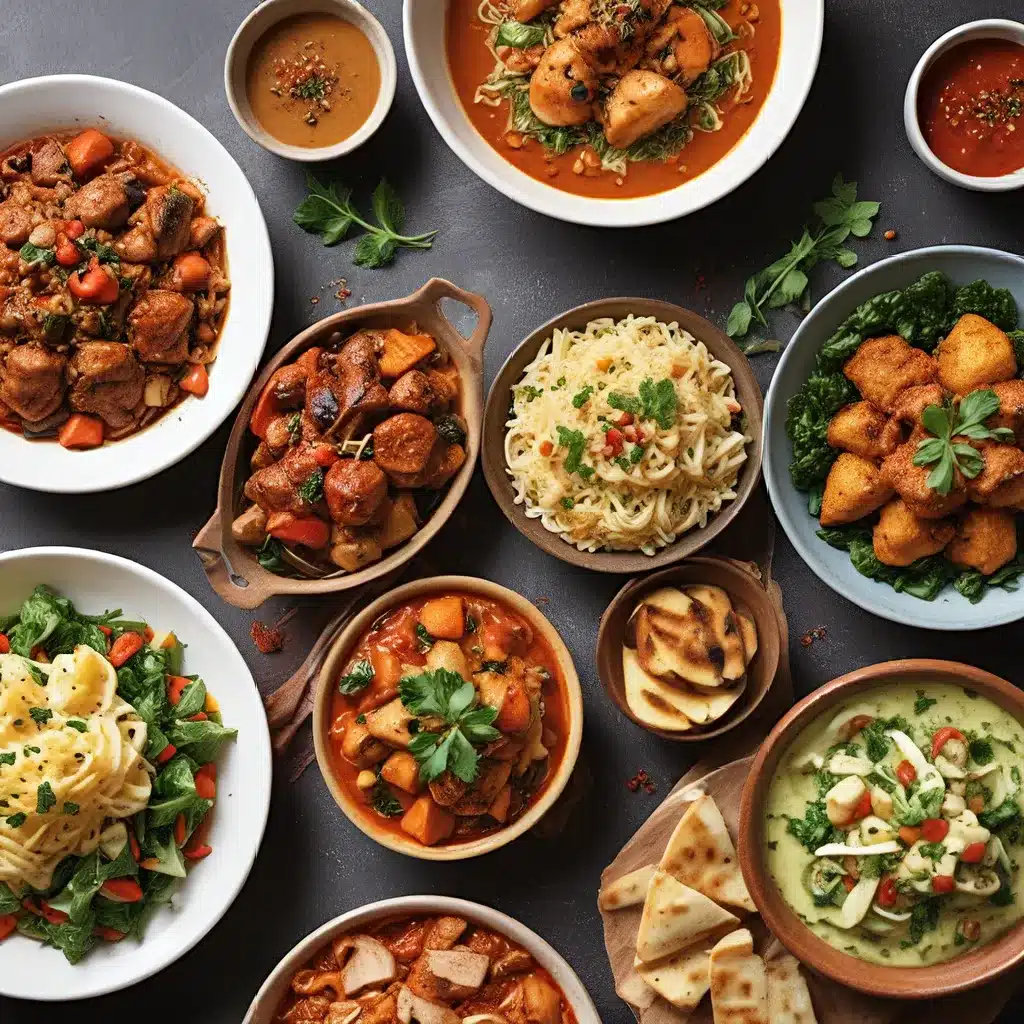
As a self-proclaimed culinary adventurer, I’ve always been captivated by the art of fusion cooking. The idea of blending flavors, techniques, and ingredients from diverse culinary traditions is endlessly intriguing to me. It’s like taking a culinary tour around the world, one delectable bite at a time.
The Evolution of Fusion Cuisine
Fusion cuisine, as a concept, has been around for centuries. Wherever cultures have intermingled, culinary cross-pollination has inevitably occurred. Some of the most iconic dishes we know and love today are the result of this culinary fusion. Take spaghetti, for example – a quintessential Italian staple that actually has roots in Chinese cuisine. Or consider the tomato, a staple in Italian and Mediterranean cooking that only made its way to Europe after being discovered in the Americas.
As the New Yorker article notes, the term “fusion” gained popularity in the 1980s, becoming shorthand for a specific type of cross-cultural culinary experimentation. Chefs began to incorporate exotic, non-French ingredients into their dishes, often with mixed results. The article suggests that “fusion” became associated with “high-concept but halfhearted experimentation” – a term that carried negative connotations of being “unfocused, corny, and disrespectful.”
However, the past two decades have seen a resurgence and rehabilitation of fusion cuisine. Chefs are now finding innovative ways to seamlessly blend flavors, techniques, and ingredients from around the world, often with stunning results. As the Eat at Desi article highlights, “Finding the nexus point between cuisines can produce clever, inspired dishes.” From the kimchi pozole at Los Angeles’ Yangban Society to the wun tun en brodo at Bonnies in Brooklyn, fusion cuisine is thriving in the hands of skilled, adventurous chefs.
Embracing the Unexpected
For me, the true joy of fusion cooking lies in the element of surprise. It’s about taking familiar flavors and combinations and turning them on their head, creating something utterly unique and unexpected. Like the time my partner and I decided to infuse gingerbread with the flavors of pho, resulting in a delightfully savory-sweet cookie that left our friends and family both perplexed and delighted.
At Saint Marc, our mission is to celebrate the art of fusion cuisine. We believe that by embracing the unexpected and finding common ground between diverse culinary traditions, we can create dishes that are not only visually stunning but also bursting with complex, harmonious flavors.
One of our signature offerings, for example, is our Korean BBQ Taco. It’s a playful mash-up of Korean bulgogi, tangy kimchi, and the ubiquitous taco shell – a fusion that somehow works beautifully, transporting your taste buds on a global adventure with every bite.
Striking a Balance
Of course, the key to successful fusion cooking is striking the right balance. It’s not about just throwing random ingredients together and hoping for the best. True masters of fusion understand the importance of respecting the individual cuisines they’re drawing from, while also finding creative ways to unite them.
As the Escoffier article points out, “Fusion cuisine calls for passionate experimentation but also a thorough understanding of which flavors and mouthfeels pair best together.” It’s all about research, trial and error, and a deep appreciation for the diverse culinary traditions that inspire your creations.
Embracing the Journey
For me, the process of creating fusion dishes is just as exciting as the final result. It’s a culinary adventure that allows me to explore, experiment, and continually expand my understanding of the world’s rich culinary tapestry. And even when a dish doesn’t quite hit the mark, I see it as an opportunity to learn and grow, rather than a failure.
As the Escoffier article so eloquently states, “Making mistakes is how you learn.” I wholeheartedly embrace this philosophy, always striving to push the boundaries of what’s possible in the kitchen while remaining grounded in a deep respect for the traditions that inspire me.
So, whether you’re a seasoned home cook or a culinary professional, I encourage you to dive into the world of fusion cuisine. Seek out new and unexpected flavor combinations, try your hand at blending techniques and ingredients from different cultures, and above all, be willing to embrace the unexpected. After all, that’s where the true magic of fusion cooking lies.

